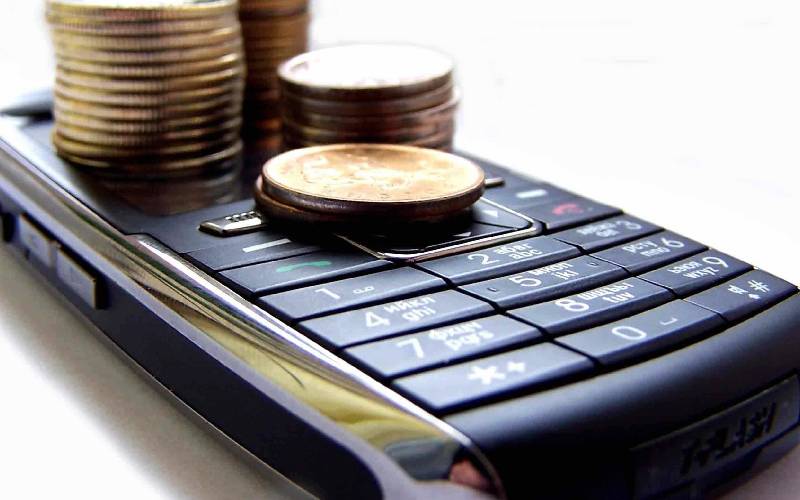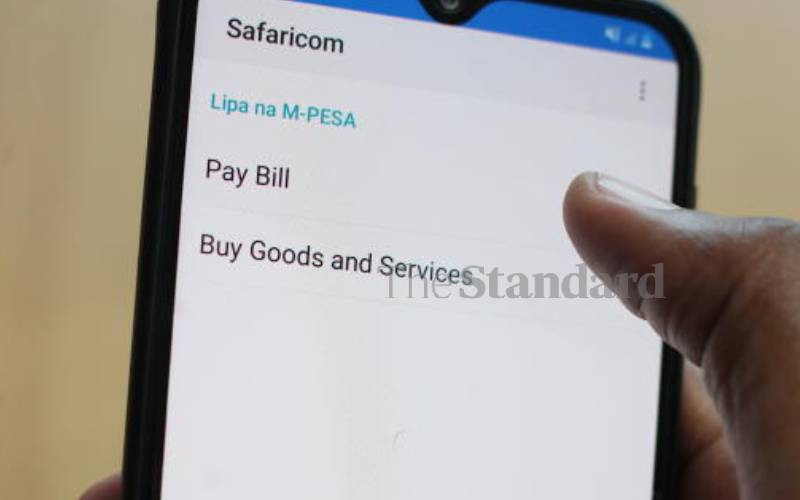
For some time, banks and digital lending applications had been seen as adversaries. The digital lending apps have in the recent past, however, disrupted the banking sector, taking the market by storm.
And just like mobile money did slightly over a decade ago, they have sent shockwaves in the banking industry.
Though they may not have the impact that telecommunication firms had by enabling customers to send money by phone, they have chipped a bit of the market previously controlled by banks as well as the shylocks.
There are, however, questions as to whether the credit offered by these lending apps can be sustained, with some citing the financial technology (fintech) firms’ predatory nature.
While banks had initially resisted mobile money, they later embraced it with gusto. Now, the disruption is from within the banking circles.
Analysts note that while the adversity between banks and the digital lending fintechs seemed to reach fever pitch, the relationship now seems to grow into one of partnerships.
This is as fintechs get into their next phase of growth and maturity.
One of the signs that such a relationship could come to pass is Standard Chartered’s SC Ventures Fintech Bridge, which the lender terms “a market-first platform to connect community builders such as start-ups, investors and accelerators to the bank”.
“SC Ventures Fintech Bridge connects and matches partners from the fintech ecosystem to the bank’s internal community, where they can propose solutions to challenges posed by the bank’s business units or request for investments,” said Standard Chartered when it launched the unit.
“Investors can also use the portal to recommend start-ups to the bank for future collaborations. This simple and fast process means that start-ups can move from initial application to final selection within just three months.”
Mobile loans have over the recent past increased the number of people that have access to credit in the country from about three million to over 11 million.
According to reports that lenders file with Credit Reference Bureaus (CRBs), there about 11 million people with credit profiles, of which 7.5 million have digital loans while 3.5 million have taken traditional facilities such as personal loans and mortgages.
The 7.5 million borrowers on the digital platforms are either customers of mobile lenders run or operated by banks such as Mshwari, KCB M-Pesa and Timiza by Barclays or are customers to the purely digital firms like Tala and Branch.
The financial technology industry is further expected to grow going by the investments that global firms are pumping into Kenya and the region.
Stay informed. Subscribe to our newsletter
A GSM Association report noted that the fintech segment of the telecommunications industry was the fastest-growing, with investors injecting over Sh30 billion in the last one and half years in different firms in sub-Saharan Africa.
“Over the last 12–18 months, Sub-Saharan Africa has emerged as one of the fastest-growing Fintech hubs in the world in terms of investments, albeit from a low base,” said GSMA in its Mobile Economy Sub-Saharan 2019 report. “Investment in African Fintechs nearly quadrupled in 2018 to Sh35.7 billion ($357 million), with startups in Kenya, Nigeria, and South Africa accounting for the largest share. This trend has continued into 2019, with a number of high-profile deals.”
Such anticipated growth is what heralds partnerships between digital apps and banks, according to TransUnion CRB the Chief executive Billy Owino.
Mr Owino noted that there exist numerous avenues for partnerships between traditional and digital lenders.
These include fintechs grooming many new customers to the financial services sector who start with ‘small’ loans to a point where they will need large loans that the digital apps might not be in a position to advance.
Here is where banks might look at the digital apps as partners in reaching out to the retail end of the market, especially those seeking micro-credit.
“In terms of the value of loans, the traditional loans will continue being the bigger lenders, accounting for more than 90 per cent of the total credit market. However, in terms of borrowers, the digital lenders are the ones that are going to be having a big piece,” he said.
“The Fintechs or the purely digital lenders are not disrupting the banks when you consider that 90 per cent of the digital lenders are run by banks (Mshwari, KCB Mpesa, and Timiza), they have been disrupting themselves.
The fintechs have woken up the traditional credit sector in terms of moving from the traditional lending systems that were outdated to realising that they need to move faster and be digital.”
The digital apps have played a key role of onboarding customer that interacts with credit for the first time through the digital loans.
Mr Owino said it is possible to take a person who has never taken a loan or had a bank account to a point that they are attractive to a bank – have a credit history and with time learned what to do with their loans.
This could not be possible before without digital lending, where being creditworthy took a long time and the first-timers needed to have collateral.
“I see a classic case wherein their next growth phase there will be a kind of collaboration is going to happen. SC Ventures is the big play where they are establishing a fund to on-board fintechs and work with them,” said Owino
“Initially it was fintechs against the banks. The fintechs figured how to do it better using technology and going for the low-end consumers while the banks reacted to the fintechs as enemies and it was about fighting them. Both are slowly realising that the market is large for both and also they have unique strengths.”
Mr Owino said banks still have that power of deep pockets and right infrastructure while fintechs are helping bring new customers that banks could not lend to because they are heavily regulated.
Banks are also tied to the Know Your Customer requirements that would not enable them to lend to new customers.
The digital lenders too agree there are areas of collaboration with banks.
Digital Lenders Association of Kenya (DLAK) Chief Executive Robert Masinde noted that though there could be some level of competition, there is no shortage of market space. “The demand for what we are offering outstrips what we all (banks and digital lenders) are offering. If there was a way that banks could provide what we are providing, then we would not be here,” he said.
“There are low amounts that the banks will not lend and our borrowers also grow and end up asking us for Sh100 000, we will easily transit to the banks.”
Masinde rooted for technology in an area where digital lenders and banks collaborate such as being able to predict the ability of people to pay.
This is considering the high default rates estimated at between 15 and 20 per cent.
The firms have been given props considering they have previously had no prior history working with their clients the first time they advance credit to them. However, a majority of them have been able to repay their debts.
“We can collaborate in many other areas. We have over time developed a lot of algorithms, models and accumulated machine learning experience and institutional intelligence, which are things that could define the future for the financial markets,” said Masinde.
 The Standard Group Plc is a
multi-media organization with investments in media platforms spanning newspaper
print operations, television, radio broadcasting, digital and online services. The
Standard Group is recognized as a leading multi-media house in Kenya with a key
influence in matters of national and international interest.
The Standard Group Plc is a
multi-media organization with investments in media platforms spanning newspaper
print operations, television, radio broadcasting, digital and online services. The
Standard Group is recognized as a leading multi-media house in Kenya with a key
influence in matters of national and international interest.
 The Standard Group Plc is a
multi-media organization with investments in media platforms spanning newspaper
print operations, television, radio broadcasting, digital and online services. The
Standard Group is recognized as a leading multi-media house in Kenya with a key
influence in matters of national and international interest.
The Standard Group Plc is a
multi-media organization with investments in media platforms spanning newspaper
print operations, television, radio broadcasting, digital and online services. The
Standard Group is recognized as a leading multi-media house in Kenya with a key
influence in matters of national and international interest.









